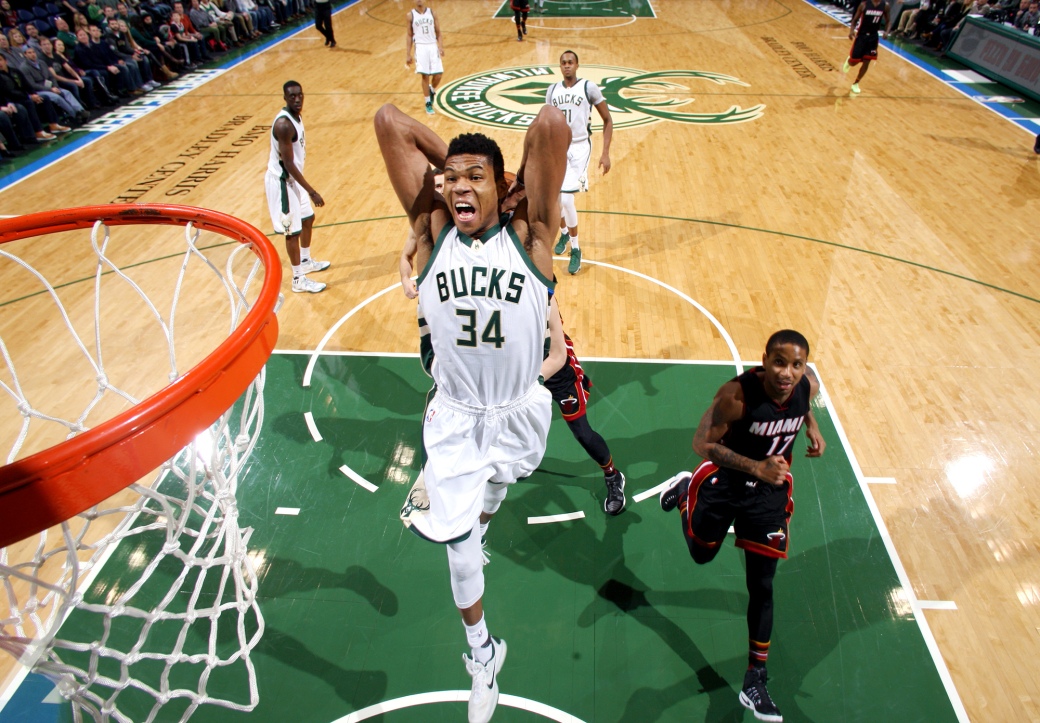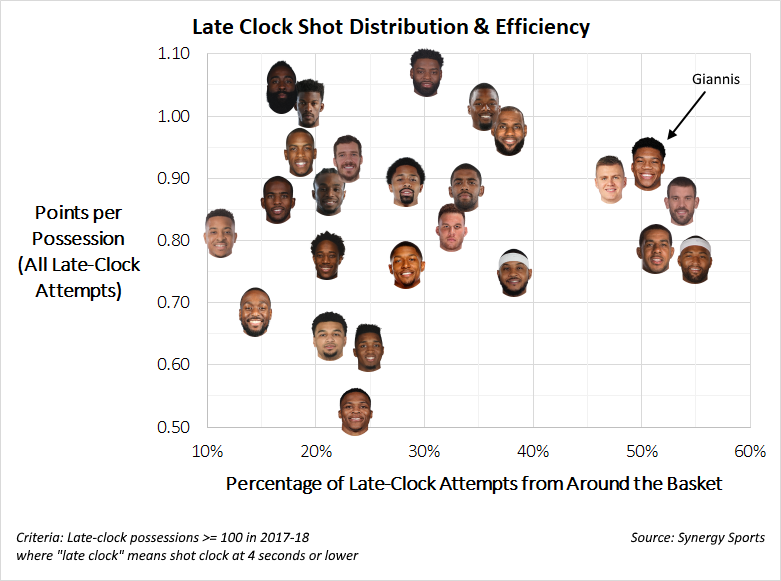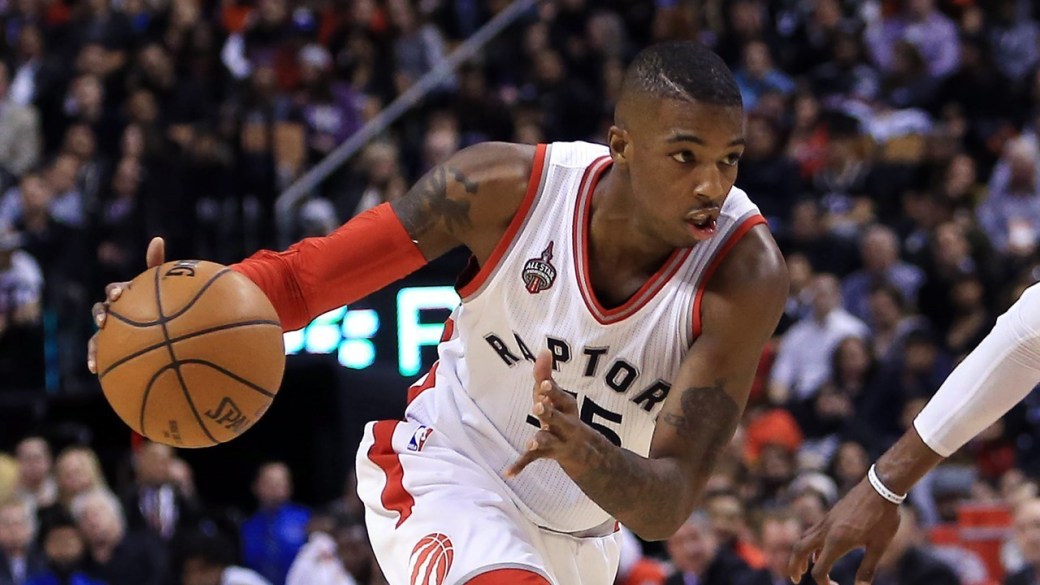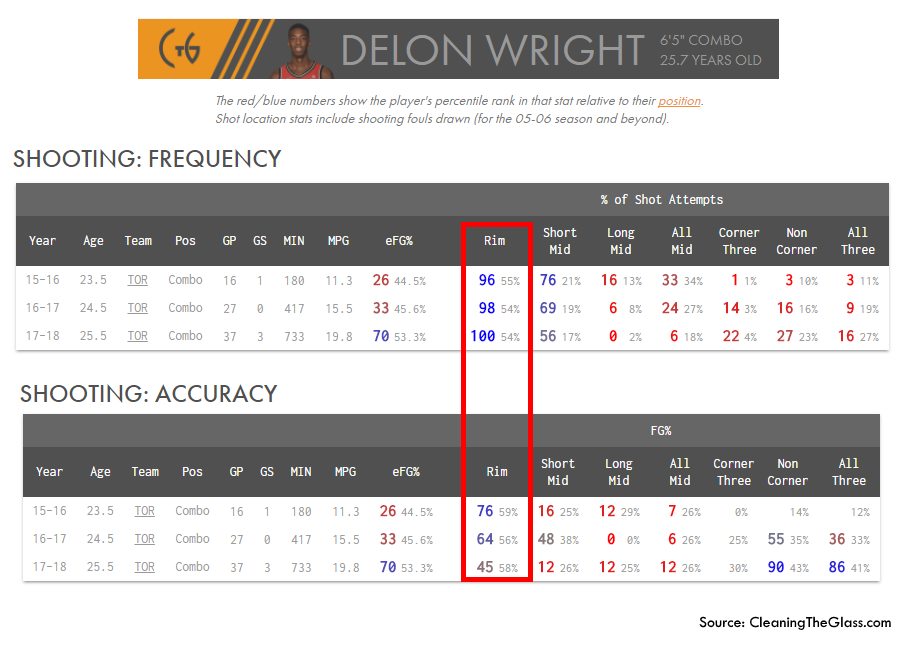
League Pass Don’t Lie is an outlet for me to nerd out and celebrate some of the cool/bizarre/fascinating things I noticed when I got sucked into the League Pass wormhole this week.
No Time? No Problem for Giannis Antetokounmpo
Oh, what it must feel like to have the confidence of Giannis Antetokounmpo. The skinny teenager who was once mesmerized by smoothies is a distant memory. That baby-faced fawn was tentative and unsteady—still growing into his body and unsure how he fit into the NBA. Giannis has matured into a snarling buck, self-possessed and devastatingly confident in his freakish abilities.
It’s not difficult to single out unique aspects of Antetokounmpo’s game (almost every aspect of his game is distinctive because he moves like an alien), but one thing that has wowed me recently is his aggression in late-clock situations.
Anyone who has picked up a basketball has played the 3…2…1… game, simulating the seconds running out so you could hit that buzzer-beater you always dreamed about. When you’re playing out that scenario, more often than not, the shot of choice is a jumper. Why? Because you have more control over the timing. In those moments, with the seconds dwindling, shot quality takes a backseat to simply getting a shot off. Most players typically resort to some kind of pull-up jumper in these situations, but Giannis isn’t “most players” and jumpers aren’t his style.
Using data provided by Synergy Sports, I analyzed the 25 players who had used at least 100 late-clock possessions this season (where late clock means the last 4 seconds of the shot clock or quarter). Synergy has data on overall efficiency (points per possession) as well as the type of shots (jump shots vs. around-the-basket attempts).

Giannis is the 8th-most efficient scorer of the group (0.917 PPP), and he’s clustered with the big men in terms of shot-type. More than half of his late-clock attempts come around the rim, whether that’s driving to the hoop or posting up. What separates Giannis is how he can still get to the basket from the perimeter in these situations. Even when time is a constraint, Giannis displays supreme confidence in his ability to get all the way to the rim.
Look at WHEN Giannis starts his moves in the above clips and how quickly he gets to the hoop. The scariest part about this is that Giannis is the worst shooter of the players on the graph. Despite this fact, he’s still able to get to the rim even though defenses know the clock is on their side and dare him to take a jumpshot. Giannis doesn’t fall for the trap, instead relying on his unstoppable driving game.
Golden State & the Art of the Off-Ball Switch
Stephen Curry is not a backbreaking defensive liability, but he’s clearly the weak link in the Golden State Warriors defense. As a result, he’s a focal point of many team’s game plans when trying to score against the Warriors. Curry typically hides on the least threatening offensive players, but smart teams know Golden State’s switch-heavy scheme will eventually lead to some mismatches when Curry gets switched onto a major threat.
In these situations, the Warriors use their collective team intelligence to switch out of the mismatch before their opponent can capitalize. Everyone on the floor is aware of Curry’s matchup and the team seamlessly switches to find a more palatable assignment for the slender point guard.
We saw plenty of this in the recent game against the Celtics:
Communication and awareness are the keys here. Smart teams will punish them if there is any delay in making the switch or any confusion about who should be where. The Warriors rarely make that kind of mistake when they’re locked in.
It’s a necessary skill because the Steph-hunting only gets worse in a playoff setting. We’ve already seen three straight Finals where LeBron James has relentlessly executed pick-and-rolls with Curry’s man to induce unfavorable switches. This leads to some fascinating sequences like this one from the season-opener:
It takes a while for everyone to make their moves, but the end result is a Harden vs. Curry isolation—just what Houston wants. The Rockets, in particular, have been determined to attack Curry and haven’t been shy about that fact (side note: don’t poke the bear, Houston).

Every Warriors opponent will try to attack Curry’s defense, but most squads don’t field enough offensive threats to punish Golden State when they send extra help his way. Houston is a different animal. The margin for error on these switches will be razor-thin thanks to Houston’s shooting. The battle between the Rockets offense and Warriors defense in a potential playoff series would be an epic chess match, orchestrated by some of the smartest players in the history of the sport.
Delon Wright: Million-Dollar Moves, 10-Cent Finishes

Delon Wright had big shoes to fill entering this season. Cory Joseph may not be a household name, but he was an important cog in the Toronto Raptors machine. After trading Joseph this summer, the role of primary backup was handed to Wright, a 25-year-old who had only played 675 total minutes in his first two NBA seasons.
Wright has acquitted himself well serving as an invaluable source of off-the-dribble creativity for Dwane Casey’s squad. He’s not especially quick or explosive for an NBA point guard, but he possesses a unique herky-jerky dribble game complete with fakes, pivots and plenty of wiggle. Using his craftiness, he’s able to penetrate and get to the basket at a high rate. The next step for Wright is finishing when he gets there.
 He’s consistently been one of the best at his position in terms of taking shots at the rim (frequency), but he hasn’t been particularly efficient with those opportunities (accuracy).
He’s consistently been one of the best at his position in terms of taking shots at the rim (frequency), but he hasn’t been particularly efficient with those opportunities (accuracy).
Wright uses his size well to keep smaller defenders on his back (commonly referred to as “putting them in jail”), but he’s visibly affected by rim protectors who can contest shots with size and verticality.
There are typically two ways around this shortcoming: strength or extension. With the strength approach, players use their athleticism, size and power to initiate contact by driving into the chest of the rim protector. With the defender knocked off-balance, there is enough space to get a clean shot off. The second approach (extension) requires long strides and one-footed finishes to create space horizontally, whether that’s extending past (or under) the defender’s arms or using a Euro step to finish around them.
Strength and contact would seem to be Wright’s best pathway to improvement given his size and struggles finishing off one foot (most of the above misses are off one foot). He looks more comfortable and controlled finishing off two feet.
I’ve thoroughly enjoyed watching the Raptors’ young bench mob this season and Delon Wright has been a key part of that. He’s knocking down 37 percent of his treys this year (on 2 attempts per game), but it remains to be seen if that’s a legitimate weapon or an uncharacteristic hot streak. If his outside shooting drops off at all, Wright’s finishing at the basket will become even more important for him and the Raptors. We know he can get to the basket; we need to see if he can convert.